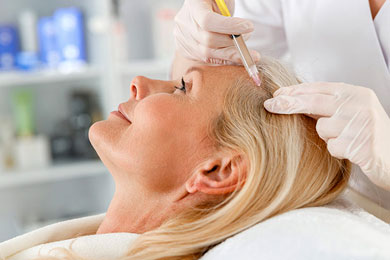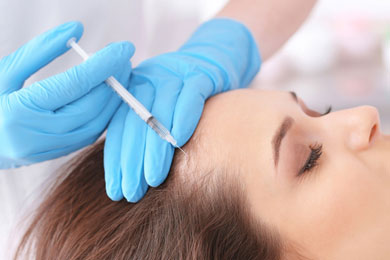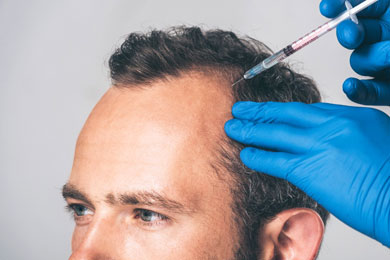
The development of allogeneic fibroblast cell therapy in regenerative medicine is fascinating. It is establishing a niche in the fields of cosmetic dermatology, wound healing, and other fields by utilizing the potential of fibroblasts. Understanding the nuances of this therapy can be essential for prospective patients and interested readers to make wise decisions. We delve into the complexities of allogeneic fibroblast cell therapy in this article.
Cells called fibroblasts are present in the body's connective tissue. They are essential for the production of collagen and the extracellular matrix, which are necessary for skin structure and wound healing. The number and efficiency of fibroblasts can decrease with age or as a result of environmental factors, which can result in decreased skin elasticity, slow wound healing, and other problems.
“Allogeneic” refers to cells or tissues that come from a donor, not the patient. This sets it apart from 'autologous' procedures, in which a patient's cells are removed, perhaps treated or expanded, and then reintroduced to the same person.
A healthy donor is carefully screened to ensure that the extracted fibroblasts are of the highest quality and are free of any infectious agents.
Cell Extraction: Fibroblasts are taken from a small skin biopsy that is taken from the donor.
Cell Culture: To increase the quantity of these fibroblasts, they are subsequently grown in a carefully controlled laboratory setting.
Patient Treatment: After being cultivated, these cells are then injected into the patient's target areas, whether it be a wound site or an area of the skin that needs to be rejuvenated.
Immediate Availability: Unlike autologous procedures, which necessitate a waiting period for cell cultivation post-extraction, donor-derived cells can be pre-cultivated and made available immediately.
The fibroblasts used for various patients have a consistent quality because they are produced under standardized conditions.
Patient burden is lessened because there is no need for a biopsy or cell extraction, which cuts down on pain and procedure time.
Conclusion
The field of regenerative medicine is incredibly open to the potential of allogeneic fibroblast cell therapy. It provides patients with a less invasive yet effective option for wound healing and skin rejuvenation. As always, seeking a specialist's advice before deciding on any medical procedure is essential. Making an educated decision and ensuring the best results and benefits requires an understanding of the subtleties of the procedure.
The information in this article should not be used in place of seeking professional medical advice. Prior to beginning any treatment, always seek the advice of a dermatologist or other medical professional.
The treatment promotes skin renewal or wound healing by using fibroblast cells from a healthy donor on a different patient.
In autologous therapy, the patient's own cells are used; in allogeneic therapy, donor cells are used.
Fibroblasts are cells that can be found in connective tissue and are in charge of collagen synthesis and wound healing.
Allogeneic therapy eliminates the need for a biopsy or cell extraction while providing immediate availability and consistent cell quality.
Yes, but there are potential risks with every procedure. To discuss potential side effects, it is imperative to speak with a specialist.
The possibility does exist, but it is extremely unlikely. Always seek a thorough risk assessment from a dermatologist.
To guarantee the best cell quality and safety, donors go through a rigorous screening process.
It can slow down skin aging, speed up the healing of wounds, and perhaps even lessen scarring.
The actual injection procedure is quick, frequently taking no longer than an hour, though consultation and post-procedure care may make this take longer.
The answers can be different. While some people might see improvements within a few weeks, others might need a few months.
According to individual factors, results' longevity can vary, but advantages can last for several months to years.
Swelling, redness, and in rare instances, allergic reactions or rejection are all possible side effects.
Although there may be some discomfort, it is typically not severe. If necessary, anesthetics can be used.
Different areas are covered. For details, speak with your insurance company.
Based on individual needs and desired outcomes, the number of sessions varies.
Yes, a lot of patients pair this with other therapeutic or cosmetic procedures. Consult your Plastic Surgeon about this.
There is typically very little downtime. Some patients, however, may experience transient redness or swelling.
Although it can help lessen wrinkle appearance, individual results may vary.
The treatment makes use of fibroblasts' inherent capacity to produce collagen, which revitalizes skin structure and speeds up wound healing.
It can be helpful for people of all ages, especially those who are aging or having problems with wound healing.
Most of the time, yes. However, it's best to put off physically demanding activities for a little while.
To ensure their safety and effectiveness, cells are grown in standardized, controlled environments.
Some medical conditions or medications may be incompatible. Always be honest with your dermatologist about your medical history.
Its suitability can be ascertained through a thorough consultation with a specialist.
Even though many people benefit, individual outcomes may differ.
While both can treat wrinkles, fibroblast therapy takes a more comprehensive approach by trying to rejuvenate skin at the cellular level.
Regional regulatory approvals differ. Always pick a clinic or doctor who complies with regional medical requirements.
It has demonstrated potential in lessening scarring, including acne scars.
The answer is possibly. Consult with hospitals or other facilities that provide the therapy for the donor requirements.
Informed consent is given by donors, and strict ethical standards are followed throughout the procedure.
The location, the specialist, and the particular patient needs all affect costs.
In most cases, yes. However, for a personalized evaluation, always consult a dermatologist.
It can make sun-damaged skin look better by encouraging collagen production.
An appointment with a expert doctor is necessary. Elective procedures are typically delayed until after pregnancy.
To reduce any such risk, donors go through a rigorous screening process.
Both stem cell therapies and fibroblast therapy use cells to regenerate tissue, but stem cell therapies use undifferentiated cells, whereas both use cells to regenerate tissue.
By enhancing skin texture and collagen production, it can lessen the appearance of stretch marks.
The therapy's objective is to encourage natural skin rejuvenation, which frequently produces a more natural appearance than some other cosmetic procedures.
It depends on the type of surgery you had and how well you are recovering. Consult your doctor at all times.
The usual post-procedure recommendations include avoiding sun exposure, using gentle skincare products, and paying attention to the dermatologist's advice.
Always keep in mind that these responses are generalized and provided only for information. A professional's advice is essential for details pertaining to specific needs.
 Advances in Stem Cell-Based Therapy for Hair Loss
Advances in Stem Cell-Based Therapy for Hair LossHair loss is a common problem that affects millions of people worldwide. While there are various treatments available for hair loss, such as medication, hair transplant surgery, and topical treatments, they Read More...
 How Much Do Adipose Derived Stem Cells Cost?
How Much Do Adipose Derived Stem Cells Cost?According to a report by the International Society of Hair Restoration Surgery, the cost of stem cell therapy for hair loss can range from $3,000 to $10,000 per session, with multiple sessions required for o Read More...
 Does Stem Cell Therapy Work on Hair Loss?
Does Stem Cell Therapy Work on Hair Loss?Loss of hair is a widespread problem that affects millions of individuals globally. There are numerous therapies available for hair loss, but not all of them may be beneficial for every individual. Read More...